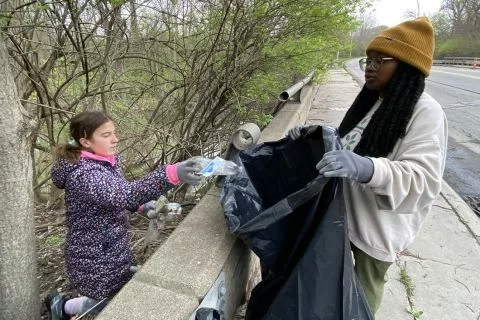In its 14 years, the GLRI has devoted more than $3.7 billion to thousands of projects across the region. The money has improved habitat and reduced pollution in contaminated “areas of concern,” such as the Detroit and Kalamazoo rivers and Torch Lake in the western Upper Peninsula.
Related:
It has done so by awarding grants to outside groups that conduct cleanup, restoration and other work. But while those grant winners have excelled in many areas, they haven’t always prioritized environmental justice — that is, making sure that cleanups benefit the poor and minority communities that suffer the most from the region’s pollution problems.
The Inspector General reviewed 30 grants for GLRI projects ending in 2019, finding that the projects helped protect habitat, cut pollution and combat invasive species. But payoff on environmental justice goals was less clear.
Grant recipients had a choice in whether to prioritize environmental justice. Auditors found fewer than half of them did so. Among that group, fewer than a third reported reaching their goals. Some neglected to detail their successes and failures when they submitted grant reports to the EPA.
Officials within the EPA’s Great Lakes National Program Office did not follow up on the missing information.
Auditors also noted that the EPA sometimes failed to submit annual reports to Congress in a timely manner. It’s the second audit in less than a year to note deficiencies with GLRI’s grant tracking.
“There’s room for improvement to capture these types of results and track and monitor those types of results,” said Tesch.
But the findings relate to grants made during the Trump administration, which was notably less concerned about environmental justice, said Laura Rubin, executive director of the restoration advocacy group Healing Our Waters – Great Lakes Coalition.
Things have since changed, she said. For instance, the Biden administration has placed special emphasis on using federal money to address the unfair harm that people of color and low-income people endure from pollution and environmental degradation.
“That really put a stake in the ground that this is a priority,” she said.
Still, Rubin said, the EPA needs to get better at measuring how its restoration projects benefit the communities most impacted by pollution and habitat loss.
“This report emphasizes, and re-emphasizes, what we’ve been talking about with the EPA,” she said.
Studies show that environmental problems — from air pollution to flooding and extreme heat — routinely hit communities of color and poor communities hardest. The unequal burden stems from a legacy of discriminatory policies that have forced Black, brown and poor communities into the least desirable neighborhoods, often directly adjacent to polluting industries.
Auditors recommended that EPA boost training requirements for GLRI project officers and do a better job of evaluating and reporting environmental justice-related outcomes from GLRI grants, among other requirements.
The EPA agreed with the audit’s recommendations.
In a response memo to auditors, Teresa Seidel, director of the EPA’s Great Lakes National Program Office, said her office has improved its training and grant tracking to address issues raised in the audit. And she noted that her office has established a new environmental justice-focused grant program in the Great Lakes.
“We look forward to tracking the progress of these Programs and reporting on accomplishments in future Reports to Congress,” she wrote.





